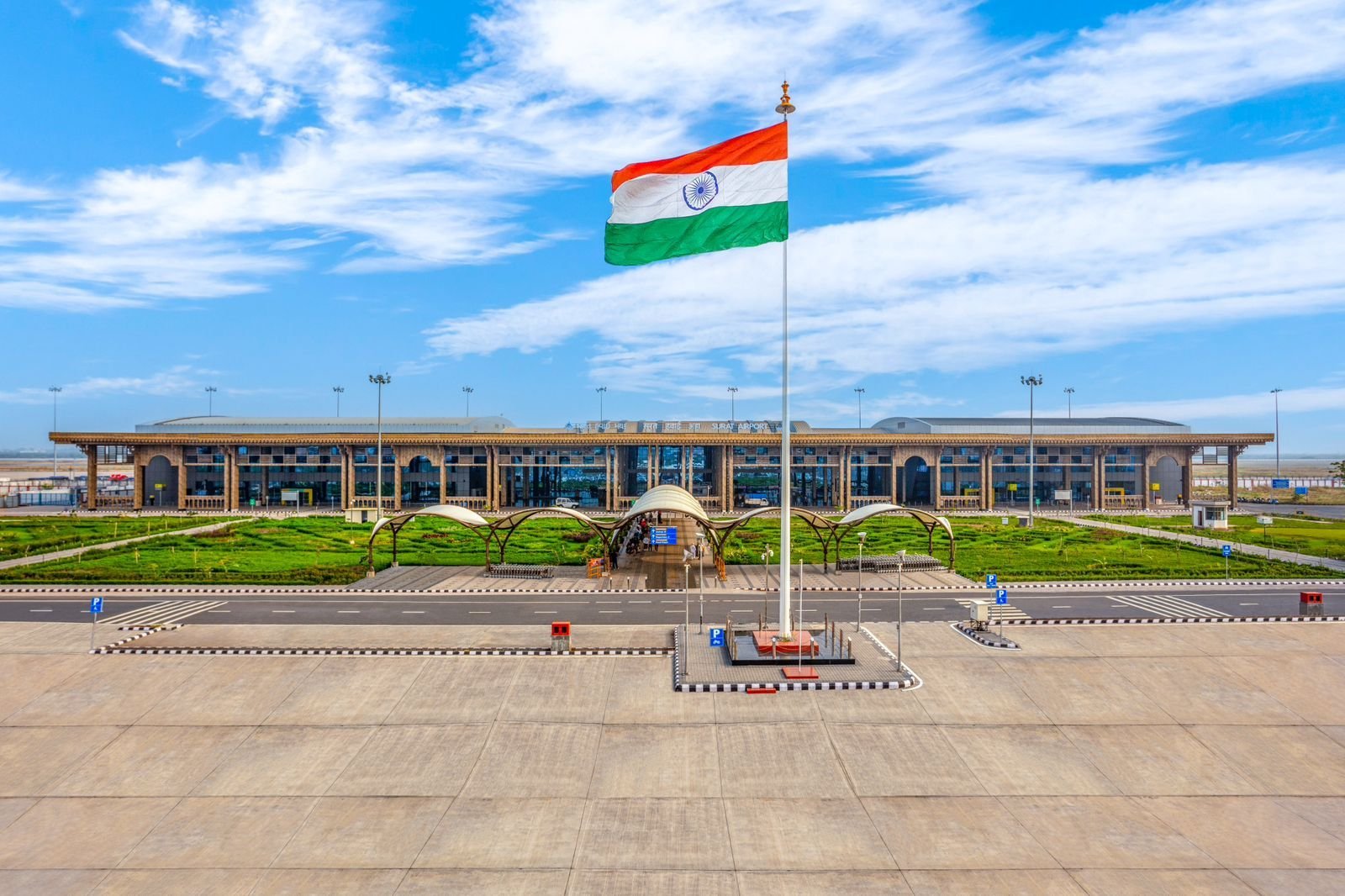Within nine days of its opening, the Surat International Airport commenced domestic flight operations from its newly opened terminal with the arrival of two flights from Delhi and Hyderabad on Monday.
Indigo Airlines operated the initial flights connecting Surat to Delhi and Hyderabad, marking the beginning of a significant chapter in the airport’s operational history. Air connectivity is key for unlocking economic growth potential, as it attracts business investment and human capital.“The first flight arrived from Delhi with 177 passengers on board and departed back with 161 passengers. Similarly, the second flight arrived from Hyderabad with 180 passengers and departed with almost an equal number of passengers from Surat,” the Airport officials mentioned.
“There was a need for a big airport. It was a long-awaited demand. The Prime Minister inaugurated the terminal on December 17. Today, we are starting the new terminal after cake cutting by the new passenger,” Airport director Rupesh Kumar said.
At present, Surat is connected to more than 14 domestic cities like Delhi, Chennai, Bengaluru, Kolkata, Hyderabad, Goa, Goa Mopa, Pune, Diu, Indore, Udaipur Belgaum, Jaipur and Kishangarh while Internationally it is connected to destinations like Sharjah.
The Union Cabinet chaired by Prime Minister Narendra Modi declared Surat Airport as an International Airport on 15th December 2023.
Surat’s connectivity pushOn December 17, PM Modi inaugurated the new integrated terminal building of Surat International Airport. The new terminal aims to strengthen seamless infrastructure for one of the most dynamic cities of India known for its booming Textile industry. The city is also globally well renowned for its cutting and polishing of diamonds.
Built for Rs. 353 crore, the New Integrated Terminal Building (NITB) is spread across an area of 25,520 sqm and is equipped to serve 1,200 domestic passengers and 600 International passengers during peak hours and 35 lakhs annually. Further, passenger facilities like 20 check-in counters, five conveyor belts, and 500 car parking slots for passenger convenience have been provided at NITB.
To cater to the rapidly increasing influx of passengers, the Terminal building has provision for increasing the capacity to 3,000 passengers during peak hours with annual serving capacity.The terminal building has been designed with its local culture and heritage ensuring that the essence should reflect both in interior and exterior, creating a sense of place for the visitors.
Notably, the facade of the upgraded terminal building aims to enrich the passenger experience with the rich and traditional woodwork of the old houses of the ‘Rander’ region of the diamond city.
